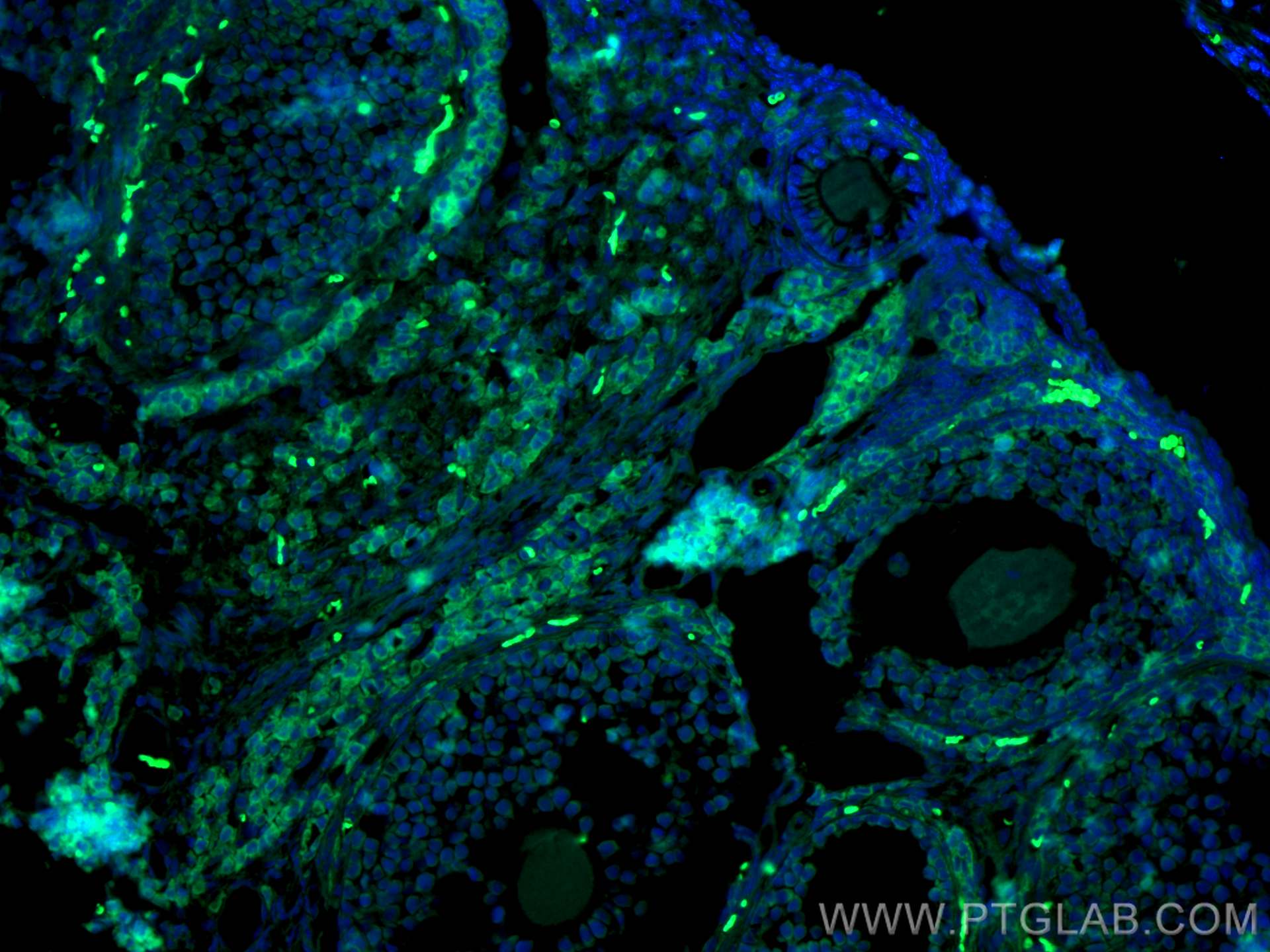验证数据展示
经过测试的应用
| Positive IF-P detected in | mouse ovary tissue |
推荐稀释比
| 应用 | 推荐稀释比 |
|---|---|
| Immunofluorescence (IF)-P | IF-P : 1:50-1:500 |
| It is recommended that this reagent should be titrated in each testing system to obtain optimal results. | |
| Sample-dependent, Check data in validation data gallery. | |
产品信息
CL488-23479 targets AMH in IF-P applications and shows reactivity with human, rat, mouse samples.
| 经测试应用 | IF-P Application Description |
| 经测试反应性 | human, rat, mouse |
| 免疫原 | AMH fusion protein Ag20166 种属同源性预测 |
| 宿主/亚型 | Rabbit / IgG |
| 抗体类别 | Polyclonal |
| 产品类型 | Antibody |
| 全称 | anti-Mullerian hormone |
| 别名 | AMH, anti Mullerian hormone, MIF, MIS |
| 计算分子量 | 59 kDa |
| GenBank蛋白编号 | BC049194 |
| 基因名称 | AMH |
| Gene ID (NCBI) | 268 |
| RRID | AB_3084075 |
| 偶联类型 | CoraLite® Plus 488 Fluorescent Dye |
| 最大激发/发射波长 | 493 nm / 522 nm |
| 形式 | Liquid |
| 纯化方式 | Antigen affinity purification |
| UNIPROT ID | P03971 |
| 储存缓冲液 | PBS with 50% glycerol, 0.05% Proclin300, 0.5% BSA , pH 7.3 |
| 储存条件 | Store at -20°C. Avoid exposure to light. Stable for one year after shipment. Aliquoting is unnecessary for -20oC storage. |
背景介绍
Anti-Müllerian hormone (AMH), also called Müllerian-inhibiting substance (MIS), is a dimeric glycoprotein and a member of the TGF-β family. AMH, produced by the Sertoli cells of the fetal testis, induces the regression of the Müllerian ducts, the anlagen of the female reproductive tract. However, after birth, this sex-dimorphic expression pattern is lost and AMH is also expressed in granulosa cells of growing follicles in the ovary. More recently, AMH has been studied for its role in ovarian folliculogenesis and as a potential marker of ovarian reserve.
实验方案
| Product Specific Protocols | |
|---|---|
| IF protocol for CL Plus 488 AMH antibody CL488-23479 | Download protocol |
| Standard Protocols | |
|---|---|
| Click here to view our Standard Protocols |

